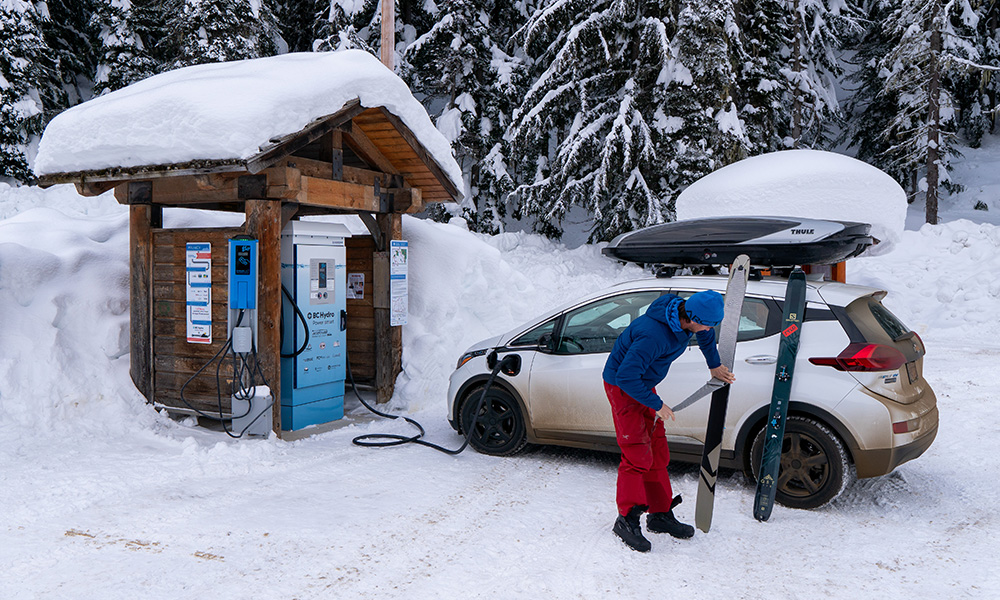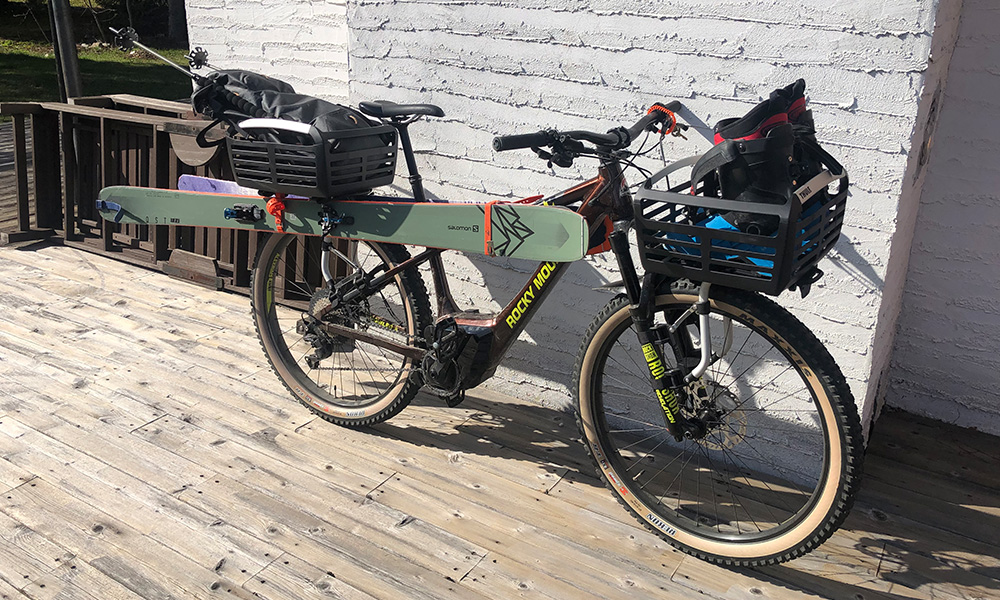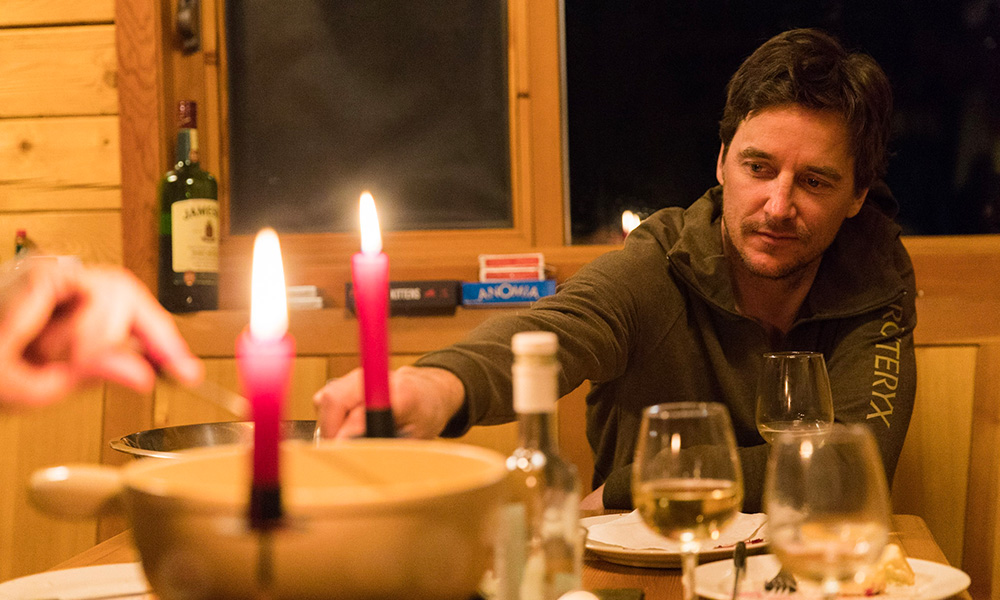
Greg charges his electric car onroute to the mountains. © Greg Hill
With the release of his latest film, Electric Greg, skimo legend and Suunto ambassador Greg Hill showed how the adventure lifestyle can be more sustainable. He climbed more than 100 mountains without using any fossil fuel, instead relying on his small electric car to get him into the mountains.
Also a weekday vegetarian who grows his own vegetables, Greg has researched how he can “be a little better'' in terms being kinder to the planet. He says it’s not about being perfect, but just trying to improve incrementally.
“As outdoor enthusiasts we are the ones who appreciate and get so much back from nature, so we should be the ones doing the most to preserve it,” Greg says. “Snowboarder Jeremy Jones is the ideal example of that. He recognized his impacts and looked for ways to change it. In creating Protect our Winters, he enabled change on so many levels, from personal to political. We can all make a difference.”
Follow the cardinal rule
Before even thinking about other ways to be more sustainable, make sure you are following the cardinal rule of outdoor recreation: pack it in, pack it out. “It’s a pretty simple mantra,” Greg says. The only thing you should leave in the outdoors are your footprints, and the only thing you should take are photos.

For a month, Greg restricted himself to cycling to and from all his trips © Greg Hill
Find backyard adventures
Often times, destinations further afield seem more exotic. While it’s great fun to explore far away places, exploring our local recreation areas helps us to feel more connected to the land where we live. It’s fun to get a topographical map of your local area, note points of interest, and visit them all. It’s also a fun adventure project to walk, hike, bike or run every single trail in your local mountain or forest park.
Move to the mountains
If working remotely is a possibility for you, consider moving somewhere closer to the mountains. “If you love adventure, find the ideal town and move there, and then backyard adventure forever,” Greg says. This will result in less travel time, therefore less carbon emissions. And every morning you will look out the window and see the mountains waitining for you!

Greg is a weekday vegetarian. Studies show eating less meat is good for the planet. © Angela Percival / Arcteryx
Use rail when possible
One of the great things about living in Europe is the rail network. Sure, you might need to factor in more time to get to and from the mountains, but using rail, rather than driving a fossil fuel powered car, definitely helps us to be a little better. And after a big day in the mountains you can sit back on the train and enjoy a well earned beer or coffee.
Buy quality gear
In this age of fast fashion and disposable culture, we are conditioned to shop for the best bargain. But the best bargain is often not the best deal. Some outdoor gear – like Suunto watches, for example – have been designed and built to last. It’s also possible to send our watches back for repair, extending their lifespan. Other gear, like these running shoes designed by Salomon, can be recycled and turned into ski boots.
Yes, good quality, durable, hardy gear usually comes with a higher price tag, but ultimately it will save you money in the long run because it will last longer and perform better. While cheap quality products wear out quickly and end up in landfill.
Maintain your gear
To help make your gear last, get professional advice about how to maintain it properly. When you get home from a big hike, for example, clean your footwear properly with the correct cleaner, and keep your leather boots waxed so the skin doesn’t dry out, potentially cracking. And wash your rain gear with washing detergent designed for the job.
Go electric
Buying an electric car is awesome, but if it isn’t possible for you then another option is to rent one when you do visit somewhere by plane. “On the last trip that I had to fly to, I landed and rented an electric car,” Greg says. “It was a Tesla Model X and it was amazing!” Remember, it’s not about being perfect, just a little better.
Reduce microfiber plastic pollution
One of the big challenges for the outdoor gear industry is reducing microfiber plastic pollution. All the plastic-based sport clothing people wear sheds trillions of microfiber plastics when they are washed, which ends up in the ocean. It’s estimated there are now more than one million trillion microfiber plastics in our oceans. That’s about 200 million microfibers for every person on the planet. Ouch.
You can help tackle this problem by choosing to use clothing made of natural materials, such as wool, or you can use a Guppyfriend Washing Bag to prevent microfibers going into the waterway when you wash your plastic-based outdoor clothing.
Choose ethical companies
“Buy from companies that have good ethical policy towards the environment and are pushing change at their corporate level,” Greg says. “Many companies are now working hard at being better.” Visit company websites and see what they are doing about sustainability. Suunto’s environmental policy is here.
Avoid packaging
Plastic packaging is a big problem for the planet’s ecosystems. It’s out of control. So, instead of buying flapjacks, for example, make your own. Take a reusable water bottle, reusable food containers, and do everything in your power to phase out packaging!
Lead images: © Angela Percival/ Arcteryx